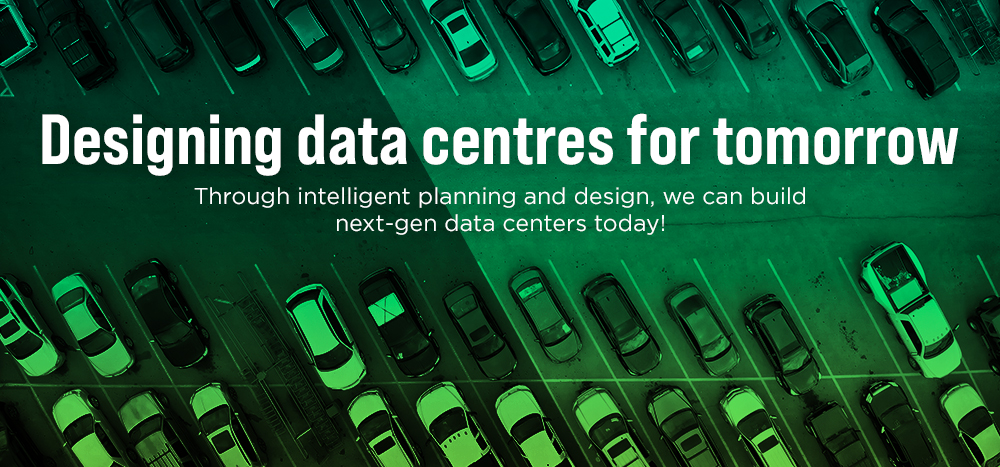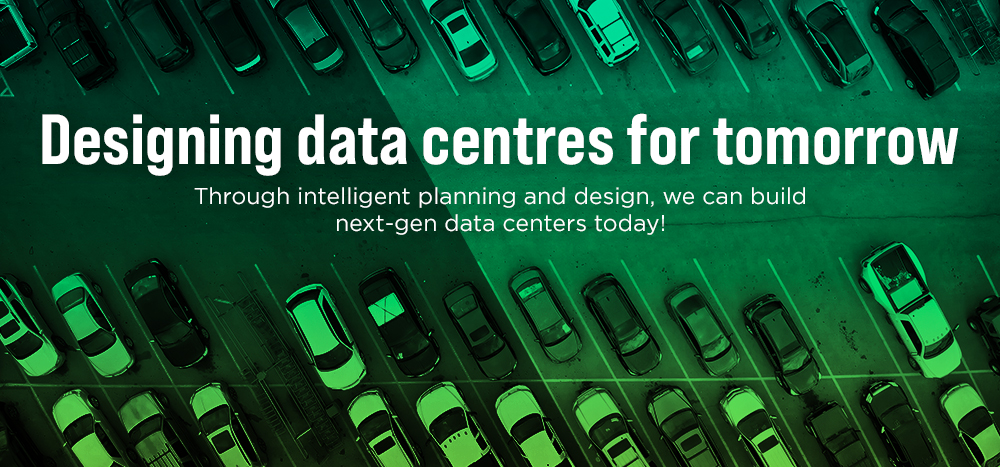We discuss the following topics in this blog:
- Rising 5G, IoT, and Edge Computing have a strong effect on data centre demand.
- Space, power, cybersecurity, and smart management.
In addition to these topics, we shall also be answering the following FAQs:
- What is WiFi?
- What is an Optical Fibre Cable?

Contents
Overview
This decade has been all about innovation. The rising next-gen technologies such as 5G, IoT, and Edge Computing have a strong effect on data centre demand. The recent digital shift due to Covid-19 has fueled the demand for data. Not only has it increased usage of data, but it has also brought a significant number of new users on board. It is forecasted that global mobile data traffic will reach 160 exabytes by the year 2025.
Over a long time, Data Centres have played a vital role as a capacity enabler for companies. The business dynamics are now changing. While the demand for data centre deployment is rising exponentially, it is also demanding new ways of thinking on data centre infrastructure.
Data centres are your servers which will last for a longer time, and a smart design strategy will make your life easier. Here are the 4 key elements to be considered by companies as a data centre design guide, when building future-ready data centres.
1. Space, Space, More Space?
Data Centre infrastructure set up is a costly affair. To avoid such heavy investments, companies often focus more on the current data demand and ignore future needs. For now, it might look like a good plan, but are you sure this much space is enough for you? Can your current equipment handle the load for growing data demand?
Looking at the rapidly increasing data consumption, it seems that you might need to set up new facilities, just in a few years. If that happens, are you ready to invest again in renovation? Before you purchase the space to set up your data centre, answer these questions. Data Centre service providers also buy extra space for future requirements and face cost issues.
Plan in advance. Think through the potential growth options. Find a better balance. Sometimes it is better to go with one-time investment than spending now and then.
2. Power up but Can You Cool it Down?
Your concern doesn’t end after setting up space. Data centres are going to be the largest global energy consumers by 2025. The next challenge awaiting you is the power and cooling management in your data centre architecture. Data Centres consume massive amounts of power supply to run the infrastructure. At the same time keeping the equipment at a normal temperature is an equally important factor. The more hardware equipment you have, the more heat it can generate.
This equipment must have proper ventilation and cooling systems arranged for the data centre network design. Using massive power consumption also adds to the carbon footprint. Find ways to use green power, renewable energy, solar power etc.
3. Cybersecurity yes, What About Physical Security?
Companies invest heavily in cybersecurity. However, physical security is an equally crucial factor and it must not be overlooked. Especially in the case of data centre services. Your data is everything. It holds a lot of sensitive information. Even if the data is not confidential, it must be accessed by only authorised people.
Physical security can be hampered by many factors such as terror attacks, natural disasters, physical breach and so on. Companies should take physical security into account to avoid these.
Using CCTV surveillance, restricting access, periodic hardware maintenance, integrating systems for fire alarm & smoke detection, can help monitor the safety and security of data centres.
4. Smart Management is a Must
Data centre management is another aspect you can’t ignore. Data Centre process and storage requires a lot of maintenance and should be intelligently managed. Otherwise, it can lead to various complications such as vendor management, maintenance of SLAs in changing environments, process management, monitoring frequent changes etc.
Use repeatable business processes to prevent these, which will ensure that your resources are utilised well.
Have an onsite support staff team based near data centre premises, that will always be available for maintenance and damage control. You should automate all the possible operational exercises. It will save you resources, time and money all at once.
While Planning your data centre design, think through the entire ecosystem. Using these key elements intellectually will give you a good start.
Sources:
[1] https://www.ericsson.com/en/mobility-report/reports/november-2019/mobile-data-traffic-outlook [2] https://www.sciencedirect.com/science/article/pii/S2096511720300761FAQs
What is WiFi?
Put simply, WiFi is a technology that uses radio waves to create a wireless network through which devices like mobile phones, computers, printers, etc., connect to the internet. A wireless router is needed to establish a WiFi hotspot that people in its vicinity may use to access internet services. You’re sure to have encountered such a WiFi hotspot in houses, offices, restaurants, etc.
To get a little more technical, WiFi works by enabling a Wireless Local Area Network or WLAN that allows devices connected to it to exchange signals with the internet via a router. The frequencies of these signals are either 2.4 GHz or 5 GHz bandwidths. These frequencies are much higher than those transmitted to or by radios, mobile phones, and televisions since WiFi signals need to carry significantly higher amounts of data. The networking standards are variants of 802.11, of which there are several (802.11a, 802.11b, 801.11g, etc.).
What is an Optical Fibre Cable?
An optical fibre cable is a cable type that has a few to hundreds of optical fibres bundled together within a protective plastic coating. They help carry digital data in the form of light pulses across large distances at faster speeds. For this, they need to be installed or deployed either underground or aerially. Standalone fibres cannot be buried or hanged so fibres are bunched together as cables for the transmission of data. This is done to protect the fibre from stress, moisture, temperature changes and other externalities.
There are three main components of a optical fibre cable, core (It carries the light and is made of pure silicon dioxide (SiO2) with dopants such as germania, phosphorous pentoxide, or alumina to raise the refractive index; Typical glass cores range from as small as 3.7um up to 200um), Cladding (Cladding surrounds the core and has a lower refractive index than the core, it is also made from the same material as the core; 1% refractive index difference is maintained between the core and cladding; Two commonly used diameters are 125µm and 140µm) and Coating (Protective layer that absorbs shocks, physical damage and moisture; The outside diameter of the coating is typically either 250µm or 500µm; Commonly used material for coatings are acrylate,Silicone, carbon, and polyimide).
An optical fibre cable is made up of the following components: Optical fibres – ranging from one to many. Buffer tubes (with different settings), for protection and cushioning of the fibre. Water protection in the tubes – wet or dry. A central strength member (CSM) is the backbone of all cables. Armoured tapes for stranding to bunch the buffer tubes and strength members together. Sheathing or final covering to provide further protection.
The five main reasons that make this technology innovation disruptive are fast communication speed, infinite bandwidth & capacity, low interference, high tensile strength and secure communication. The major usescases of optical fibre cables include intenet connectivity, computer networking, surgery & dentistry, automotive industry, telephony, lighting & decorations, mechanical inspections, cable television, military applications and space.















